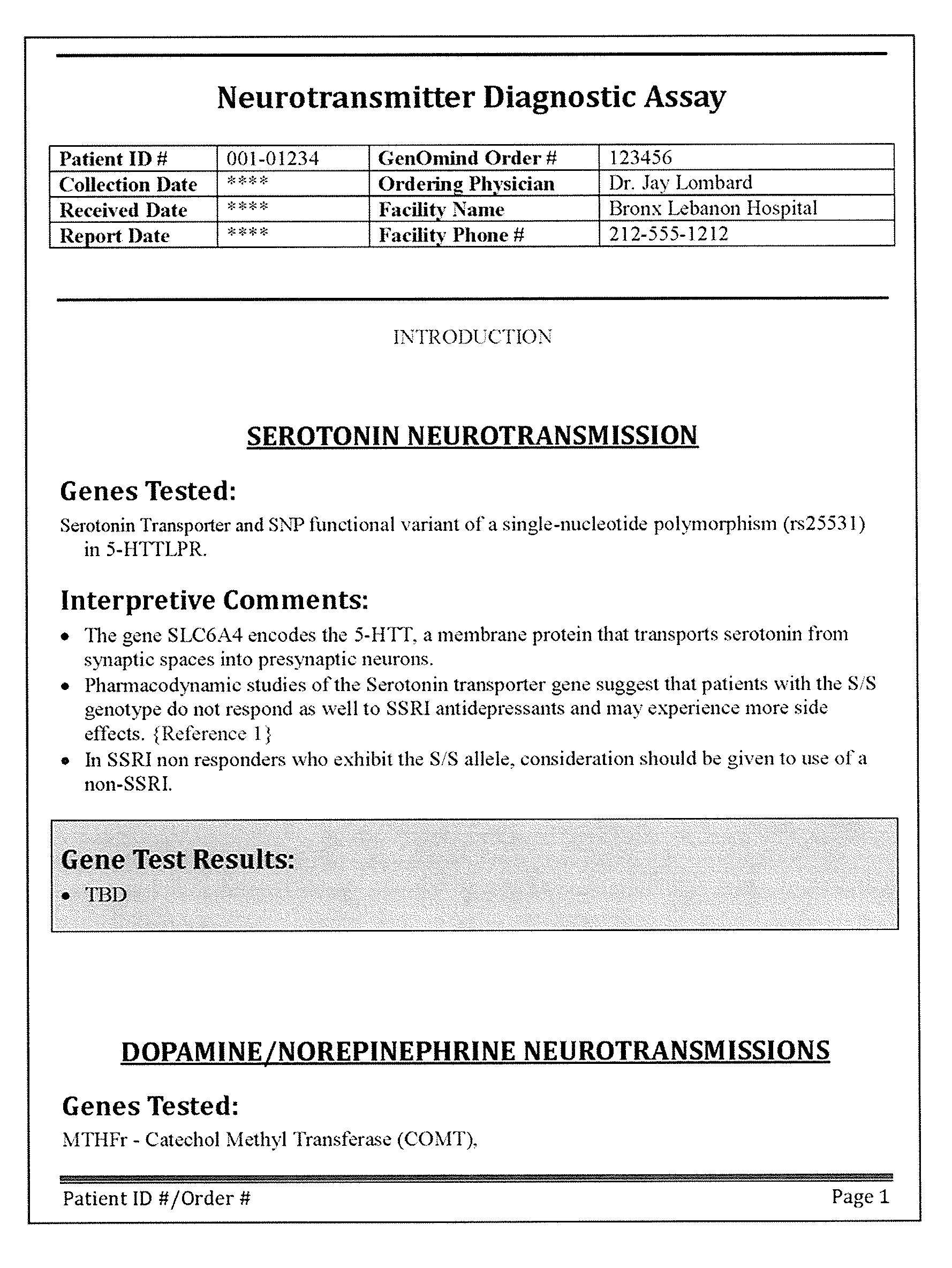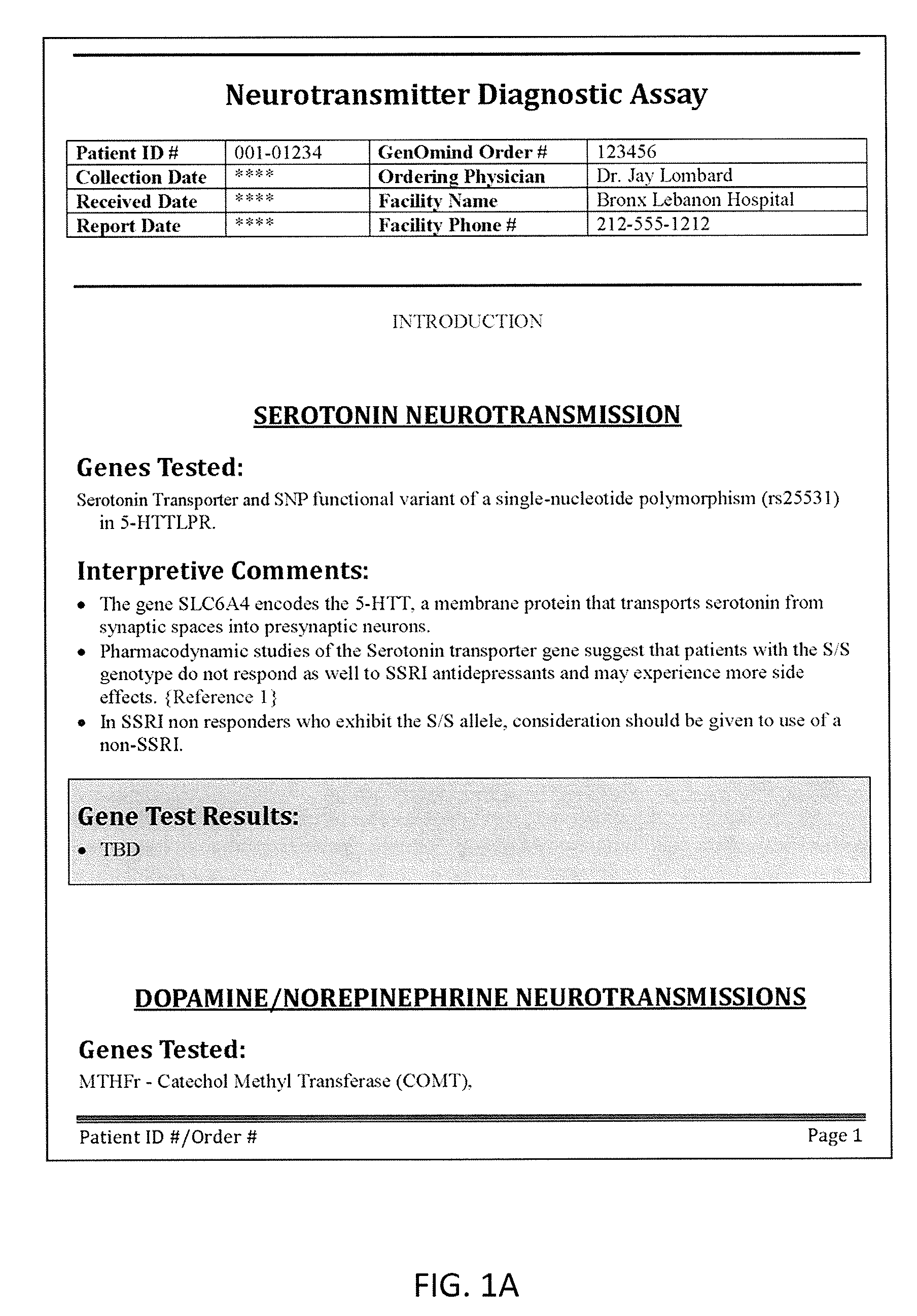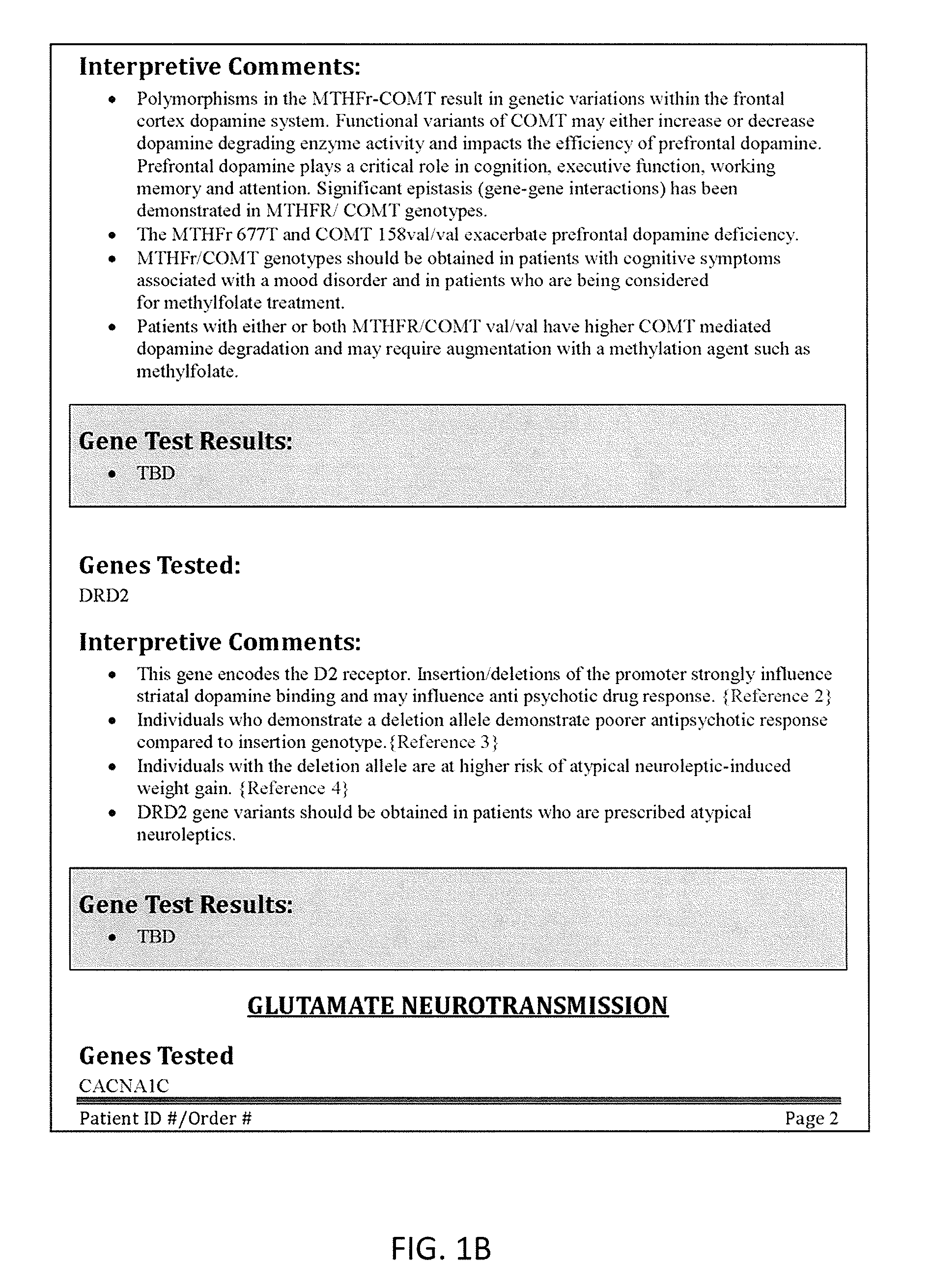Neuropsychiatric test reports
a neuropsychiatric and test report technology, applied in the field of neuropsychiatric test reports, can solve the problems of autonomic arousal, individuals with dysfunction in this axis may exhibit abnormalities in motivation, attention, cravings, and addiction, and achieve the effect of reducing gene expression and ameliorating aggressive symptomatology
- Summary
- Abstract
- Description
- Claims
- Application Information
AI Technical Summary
Benefits of technology
Problems solved by technology
Method used
Image
Examples
example 1
Treatment Resistant Disorders (TRD)
[0236]In some variations, the articles of manufacture described herein are generally reports including information of patient-specific biomarkers that is relevant to pharmacologic intervention and treatment of treatment resistant disorders (TRD) in neuropsychiatry, regardless of a particular categorical diagnosis. The inventor has identified a small sub-set of biomarkers that may be important for understanding the best way to treat psychiatric treatment resistance. This subset of biomarkers may be selected from the four axes discussed above (including the three pharmacodynamic axes and the pharmacokinetic axis), and may represent a subset of biomarkers representing these axes. A patient's genotype for all, or a major subset, of these six members of this TRD epistatic group (e.g., five of the six, four of the six, three of the six) may provide sufficient information to a medical practitioner to accurately guide treatment. Although information about ...
example 2
Indexing / Weighting
[0265]As mentioned above, any of the interpretive reports described herein may include indexing or weighting of the interpretive comments. The various types of interpretive comments that may be included in the report include: physiological significance, association studies, current research findings, pharmacological implications, and the like. The information provided by the interpretive comments may be based on medical and scientific research, including both published and unpublished data.
[0266]All or a subset of the interpretive comments may be indexed with an indicator (which may also be referred to as an “index”) providing a confidence level for the interpretive comment. For example, in some variations the interpretive comments may include a description or mention of the results of one or more association studies relevant to the patient's biomarker test results. An index may provide weighting context by indicating the appropriateness of the association study to...
example 3
Assay Report
[0270]FIGS. 3A-3B illustrate one portion of another variation of an interpretive report. FIGS. 5A-5D and 5E-5M show an alternative variation. In FIGS. 3A-B, the report (“Assay Report”) includes a patient identifier (patient name, and / or “patient ID”). The report also indicates the source of the biomarker test results, including the sample type, ordering clinician, receive date, etc. This exemplary assay report also includes information from each of the four axes illustrated above in seven representative biomarkers: SLC6A4, CACNA1C, DRD2, COMT, MTHFR, HTR2C, ANK3, CYP2D6, CYP3A4, and CYP2C19. FIGS. 3C-3J also illustrate additional pages of the interpretive report.
[0271]FIG. 3A is the first the interpretive report. In this example, the report (“Assay Report”) includes a patient identifier (patient name, and / or “patient ID”), followed by an interpretive key (“How to read the report” section). The interpretive key section describes the index / weighing system used by the repor...
PUM
 Login to View More
Login to View More Abstract
Description
Claims
Application Information
 Login to View More
Login to View More - R&D
- Intellectual Property
- Life Sciences
- Materials
- Tech Scout
- Unparalleled Data Quality
- Higher Quality Content
- 60% Fewer Hallucinations
Browse by: Latest US Patents, China's latest patents, Technical Efficacy Thesaurus, Application Domain, Technology Topic, Popular Technical Reports.
© 2025 PatSnap. All rights reserved.Legal|Privacy policy|Modern Slavery Act Transparency Statement|Sitemap|About US| Contact US: help@patsnap.com



